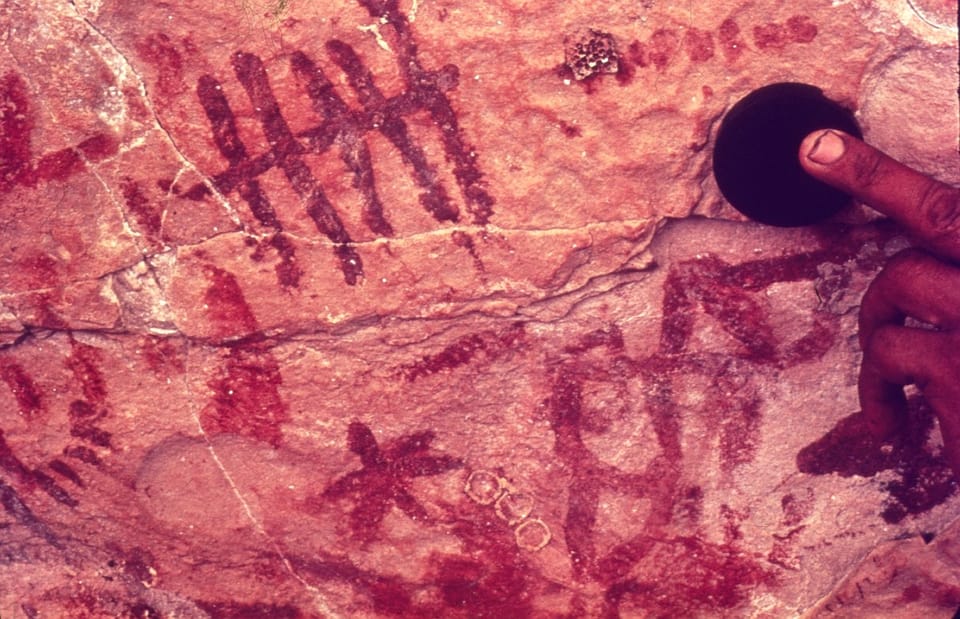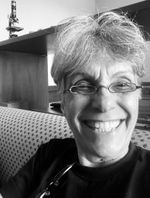Helena Costa
Niéde has long been known and admired by those working for more inclusive tourism. In Serra da Capivara, this courageous scientist led movements that looked not only at the ancestors and everything that Archaeology could reveal. As if that were insufficient, she looked at those communities that lived there, in great penury, and looked for ways that they could live the greatness of what our ancestors left there.
All the admiration and thanks of LETS to Niéde Guidon, who did a lot for the archaeological heritage of Brazil and the world. Who left a legacy of determination, despite the countless difficulties. That left a National Park worthy of being a source of pride for Brazilians (even if little known by so many of us).
In March of this year, the Museum of Image and Sound of São Paulo had already organized an exhibition in celebration of Niéde's 90th birthday. Celebrated and recognized in life (fortunately!) for her giant contributions as shown here .
We thought of ways to record this tribute. A more institutional, more personal, more academic memorial? And here we are: to the beautiful text of our researcher Prof. Dr. Iara Brasileiro - with whom I learned so much about Niéde and started to have an immense affection for this woman I never got to see in person.
Let's stay with Prof. Iara's text, which moves us with every word.

To the tireless, courageous and determined woman, Niède Guidon
Iara Brasileiro
Niède Guidon ended her life among us on June 4th. According to people close to her, "she felt unwell, took something to relieve it and went to sleep." At dawn, his heart stopped. Simple as that.
What to say about this researcher and scientist? What about this woman?
Impossible not to be impacted by his discreet presence, but impressively strong and striking. I had the privilege of meeting her, of being received at her home and even of discussing with her the possibility of developing a project together. I wrote the proposal that she signed without objections and we forwarded it to the institution that, we thought, would have every interest in supporting it. Unfortunately, we never received a response, even though we knew that everyone who read the project thought it was innovative and important. A pity, but this would be just another "no" we receive when we seek resources for research that, as important as they are, does not sensitize the funders' coffers. Certainly Niède bumped into many doors. That was just another one.
The project did not succeed, but the memory of Niède remains in my heart. I do not know the reasons she had for determining that the Museum be open to me; that I was accompanied by a researcher and professor on the visit to the laboratories; that the head of the Park would show me trails not yet open to visitors; to talk to me for hours.
How can we forget such hospitality, if all the "thresholds" have been crossed forever?
In the days I was visiting the city of São Raimundo Nonato (PI), the Museum of the American Man and the Serra da Capivara Park, I was able to talk to women and men who worked directly or indirectly for the Foundation. There I learned, up close, what it is to know and take care of the past, to value the present to ensure the future.
Realizing that many women were mistreated and devalued, Niède began to hire them, guaranteeing them jobs, power and, consequently, freedom. He did not neglect men, dedicating himself to teaching them values of care for themselves, for others and for nature. He employed the hunters as watchmen, giving them another perspective for his always attentive gaze, aware of the tracks, smells and presences. He insisted that the children attend school. He promoted musical training and encouraged work in ceramics. He rescued the greatness of millennial life.
As for science, he confronted established theories and courageously defended other ideas. For decades he faced criticism of his performance and explanation of his archaeological finds. He identified more than 800 archaeological sites, created the Museum of the American Man Foundation (FUMDHAM) and the Serra da Capivara National Park, a UNESCO World Heritage Site. It marked science.
What made it so present? Perhaps the mysterious force of the distant past, but so alive, accompanied her on her journey. Or perhaps, who knows, she has learned from the vegetation of the Caatinga, from the jaguars and birds, and from the little mocós, to simply resist and keep her soul free, brave, firm and persevering.
Niède Guidon left her "marks on the stone".
His burial is in the backyard of the house in which he lived, next to the Museum of the American Man.



